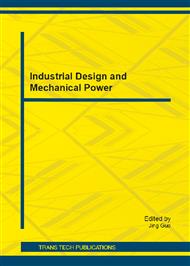p.514
p.520
p.524
p.529
p.533
p.539
p.543
p.547
p.551
Study on Three-Motor Synchronous System of Fuzzy Active Disturbance Rejection Control
Abstract:
Fuzzy active disturbance rejection controller of three-motor synchronous system is proposed in this paper, which could adjust the parameters automatically by using the inferential capability of fuzzy control. Double channels compensation of extended state observer is used to estimate and compensate the total disturbance of the system and the coupling between speed and tensions, thus an approximate linearization and deterministic system is obtained. The results of experiments prove that the control system has better performances of dynamic and static characteristics, stronger anti-interference ability and better robustness than the traditional PID control system, realizing a better decoupling control of speed and tensions.
Info:
Periodical:
Pages:
543-546
Citation:
Online since:
November 2012
Authors:
Price:
Сopyright:
© 2012 Trans Tech Publications Ltd. All Rights Reserved
Share:
Citation:


